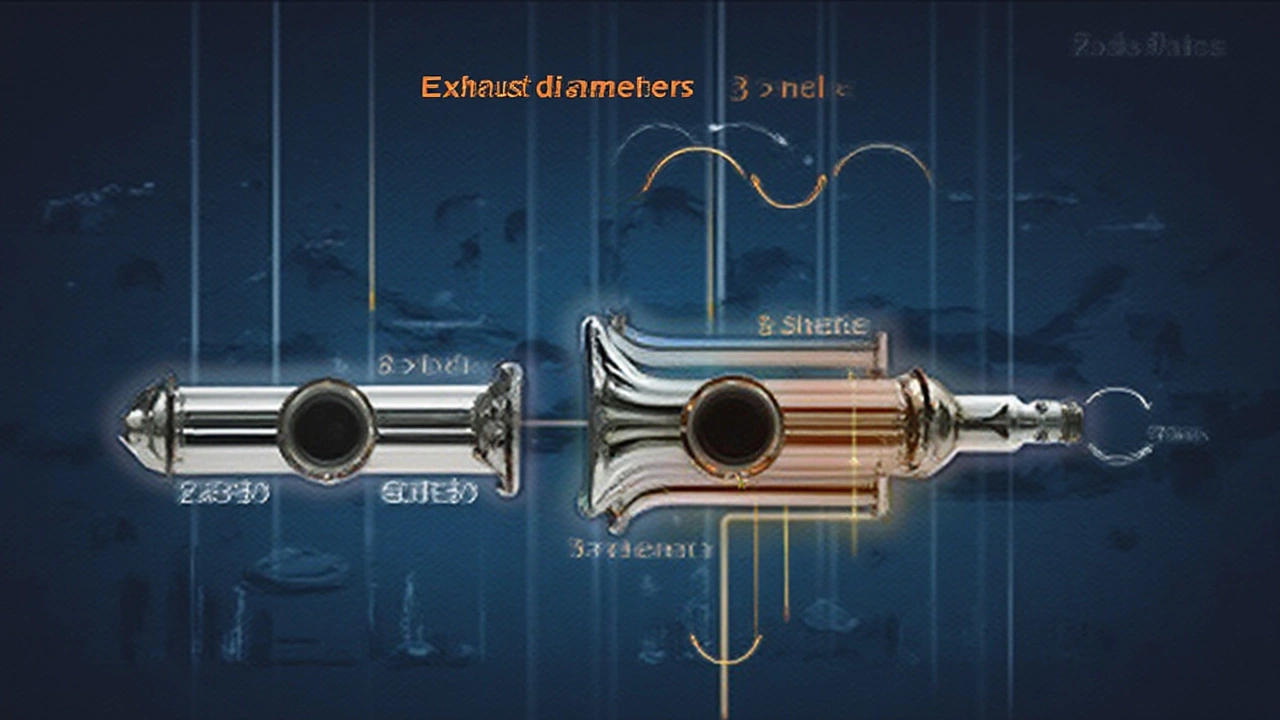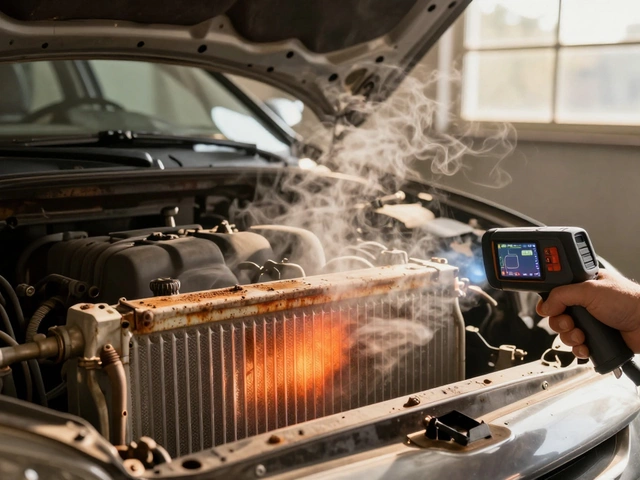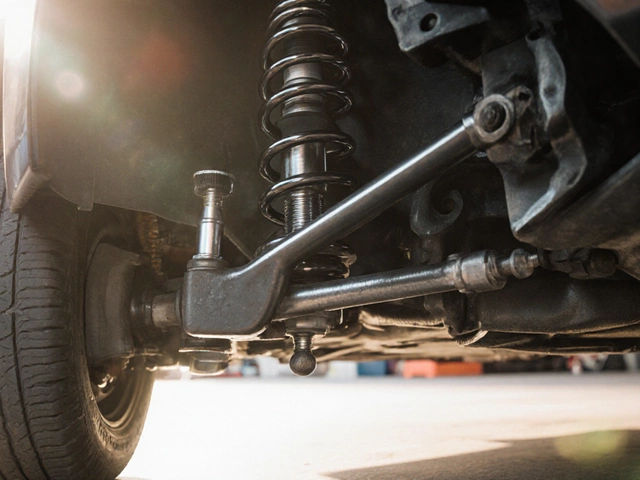Nothing divides car enthusiasts like the debate over exhaust size. You might have heard two people argue in a parking lot about whether upsizing from a stock exhaust to a 3 inch system actually does anything—apart from waking the neighbors. Some will swear their car came alive, while others say their wallet was lighter but their ride felt the same. So, does a 3 inch exhaust make a difference, or is it just another expensive way to sound meaner at stoplights?
What a 3 Inch Exhaust Really Changes
Let’s start by getting the technicals out of the way. A 3 inch exhaust refers to the diameter of the piping that runs from your headers or turbo all the way to the tailpipe. Your stock exhaust—unless you own something turbocharged or purpose-built for performance—likely sits around 2 inches or even 1.75 inches. Why do people obsess over that extra inch? It’s not about vanity; it’s about flow.
The larger the exhaust pipe, the more air (or, in this case, exhaust gases) it can carry out of your engine. More flow usually means less backpressure. Backpressure is basically resistance to flow—think about running through a wide corridor versus a narrow alley. Now, too much backpressure chokes high-horsepower engines, especially if you’ve bolted on a turbo or started chasing higher RPM. But here’s where things get interesting: you can’t just keep making the pipe bigger and bigger and expect non-stop gains. For smaller, naturally aspirated engines (think the classic Honda four-bangers), a chunky 3 inch pipe can actually hurt low-end torque because the exhaust gases lose velocity. They slow down, and the energy that helps evacuate the cylinders isn’t as effective.
So, who really benefits? If your aim is to push more power from turbocharged, supercharged, or heavily modified engines—say, you’ve gone from 200 HP to 350 HP—you want a big exit door for all that extra air and fuel. That's where a 3 inch exhaust shines, much more so than for your grandma’s Corolla. It’s not just talk. According to a dyno test by Hot Rod Magazine, switching to a 3 inch system on a 400 horsepower turbo car increased peak power by 12 horsepower over a 2.5 inch system. Not earth-shattering, but real. Exhaust size matters more as your horsepower climbs. That’s why you’ll see bigger exhausts on the WRX that’s been tuned within an inch of its life, or American muscle cars trying to keep their V8s breathing easy.
No conversation about exhausts is complete without mentioning sound. Bigger pipes usually amplify volume and deepen the tone. If you want to turn heads at meets, a 3 inch pipe paired with a free-flowing muffler will deliver. But on some platforms, drone and rasp sneak in at cruising speeds, which is why so many folks add resonators or special mufflers to keep things civil inside. It’s a trade-off: you get attention, but you might sacrifice comfort.
So, does going 3 inch always make sense? Here are some situations where it pays off:
- You run a turbo or supercharged engine, making well above stock power.
- You spend most of your time at high RPM—track, strip, or high-speed highway runs.
- You crave a louder, bass-heavy exhaust note.
And situations where it’s probably overkill:
- Your car is naturally aspirated, bone stock, and makes under 200 HP.
- You value quietness and comfort.
- Your use case is mostly city driving and daily commutes.
Worth noting: the pipe diameter isn’t the whole story. Muffler design, catalytic converter flow, and even how many bends the exhaust takes under your floor pan all add up. Two cars with the same 3 inch system can behave totally differently. So, it’s not just about slapping on a fat pipe; you need the whole system in sync.

How to Know if a 3 Inch Exhaust is Right for You
If you’re still wondering if you should drop your hard-earned cash on a 3 inch setup, let’s talk numbers and practicality. The automotive engineering world isn’t just about guesswork—there are some clear guidelines.
Here’s a basic rule: for naturally aspirated engines, most recommend a max of 2.5 inches up to about 300 HP. For turbocharged or supercharged engines pushing 300 HP or more, a 3 inch pipe can start making sense. Want numbers? Here’s a quick-and-dirty reference:
| Exhaust Diameter (inches) | Recommended Max Horsepower (approx.) | Ideal Engine Type |
|---|---|---|
| 2.0 | Up to 200 | Stock/non-modified NA |
| 2.5 | 200 - 300 | Mild NA/tuned NA |
| 3.0 | 300 and up | Turbo/SC or heavily modded |
Still not convinced? Check the manufacturers’ recommendations or hop on a car forum tied to your make. Real-world users are usually happy to share DYNO sheets. If you daily a bone-stock Accord and bolt on a 3 inch system, don’t expect a miracle. You might lose torque, annoy your neighbors, and gain zero power.
Cost is another angle. A well-made 3 inch stainless system can run over $1,000. Then there’s labor unless you’re handy with a welder and want to DIY. Some folks end up trying to save by buying universal kits and hacking things together, but fitment is hit or miss, and exhaust leaks are no joke. A reputable shop will make sure the diameter is consistent, the hangers are solid, and the welds won’t rot away—think long-term reliability, not short-term bragging rights.
It’s not always about raw horsepower, either. Want more sound? A bigger pipe definitely delivers. Towing a heavy trailer where your engine labors under load for hours? Bigger exhaust works there too, helping keep engine temps down and preventing power loss.
One last point: emissions and inspections. In some regions, aftermarket exhausts can get you in hot water if they’re too loud or don’t use factory-style catalytic converters. So factor in your local laws before making permanent changes to your ride.
There’s a saying among engine builders: “The best exhaust is as big as you need and no bigger.” Even Formula 1 teams, who count grams and centimeters, size pipes for maximum velocity, not just flow. As Mike Kojima from MotoIQ put it,
“Too large an exhaust pipe on a naturally aspirated car makes your torque curve soft, especially down low. Match the diameter to your use and don’t just copy what your buddies run.”

Real-World Results and Advice from the Experts
So, what does this look like on real cars? Scroll through YouTube and you’ll find plenty of before-and-after dyno videos. For example, a 2019 Mustang GT saw a measurable 5-10 HP improvement when switching from 2.5 to 3 inch piping—but only when already running headers and an aggressive tune. Meanwhile, a bone-stock Civic picked up zero horsepower, and the owner claimed the drone made him swap back to stock after a month. One WRX owner saw more turbo spool and a punchier top end after a 3 inch swap, but low RPM torque dropped a bit. It’s not just about size but pairing with engine upgrades and intended use.
The technical reason behind this is called “exhaust scavenging.” Smaller pipes maintain velocity at lower RPM, helping pull exhaust out with a little suction effect, which fills the cylinders with fresh air-fuel mix faster next cycle. Go too big, and you lose that help. So if you spend your life merging onto highways at full throttle, you’ll like what a bigger system can do, but most of us need that low-end grunt for city crawling and quick getaways from stoplights.
The experts keep doling out the same advice: pick your pipe size for your engine, your mods, and your goals. Muffler shops are rarely the place to get the gospel truth—talk to tuners who see dyno sheets daily.
Some handy tips for choosing an exhaust:
- Check your car’s stock diameter. If it’s under 2.25 inches and you’re stock, upgrading to 2.25 or 2.5 inches is usually enough.
- If you’re chasing big turbo power, 3 inches makes sense, but don’t skip the supporting mods—high flow cats, headers, and a proper tune.
- If you care about sound, look for systems with resonators to limit unwanted drone.
- Never skimp on material quality. Cheap stainless is better than rusty mild steel.
- Ask around—someone with your engine and mods has likely tried every combo. Forums are gold mines for real-world feedback.
If you love knocking out your own projects, welding a 3 inch stainless system is challenging. The material is tough on tools and hands. Make sure your car is lifted safely and wear hearing protection—angle grinders on stainless are no joke. If you prize reliability and a perfect fit, a pro install is worth every dollar.
3 inch exhaust upgrades can make real-world difference, but “bigger is better” isn’t a golden rule. You need the right pipe, the right supporting mods, and a realistic picture of how you want your car to perform and sound.
If you’re into numbers, here are some typical gains:
| Car | Stock HP | 3 Inch Exhaust HP Gain (approx) | Other Mods? |
|---|---|---|---|
| Subaru WRX (2015+) | 268 | +8 to 15 | Yes (tune/intake) |
| Mustang GT (2018+) | 450 | +5 to 12 | Yes (headers/tune) |
| Honda Civic Si (stock) | 205 | 0 to +2 | No |
| Chevy Silverado 5.3L | 355 | +10 | Yes (tune) |
Upgrading your exhaust makes sense when it’s part of a plan—not just a fashion statement. So, sketch out your horsepower goals, decide if you want to shake the windows, and don’t be afraid to ask what the local tuner shop runs on their own car. As with most car mods, it really does pay to measure twice, cut once, and make sure those extra decibels—or horses—are worth the investment.











Write a comment